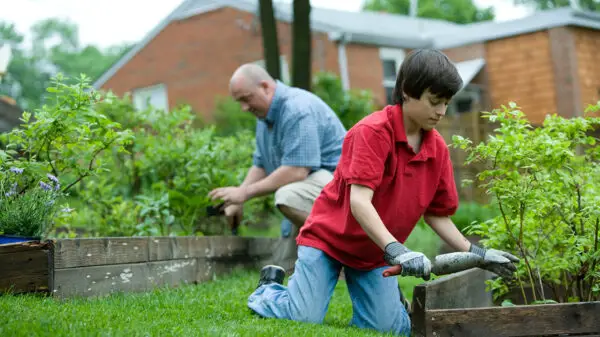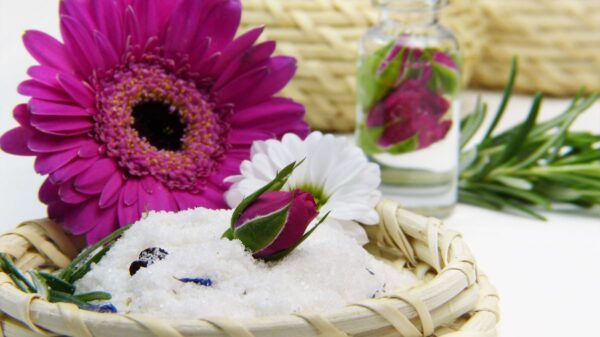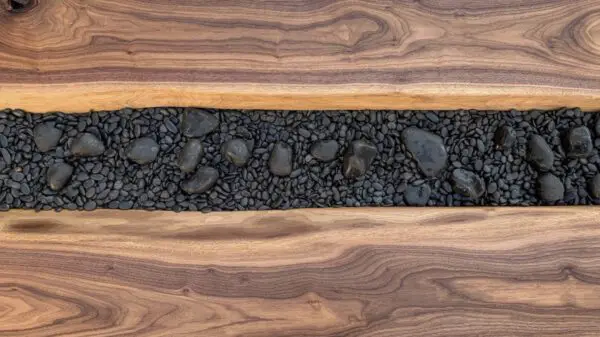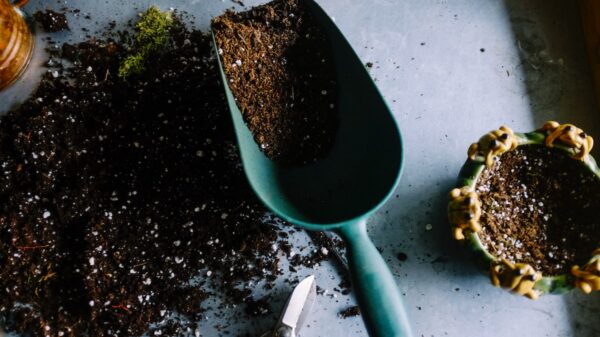A Comprehensive Guide to the Best Plants for Indoor Microgardening
Indoor microgardening is a wonderful way to bring a touch of greenery and life into your living spaces, no matter how limited they might be. Whether you live in a small apartment or a spacious house, cultivating indoor plants can offer numerous benefits, from improving air quality to reducing stress levels. However, choosing the right plants for microgardening indoors can be overwhelming due to the diverse range of options available. In this guide, we will walk you through the best plants for indoor microgardening, providing expert insights and practical tips to help you create a thriving green oasis within your home.
What Are the Best Plants for Indoor Microgardening?
When it comes to indoor microgardening, the key is to select plants that can thrive in the limited conditions of an indoor environment. Lush foliage, vibrant flowers, and even edibles can all be part of your indoor garden, but it’s crucial to choose wisely to ensure success. Let’s explore some of the best plant options that are not only visually appealing but also manageable for indoor spaces:
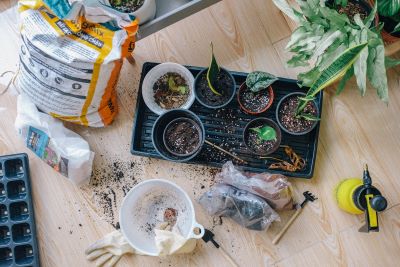
1. Peace Lily (Spathiphyllum)
The Peace Lily tops the list of indoor microgarden enthusiasts due to its elegant appearance and air-purifying abilities. With its dark green leaves and graceful white blooms, this low-maintenance plant can thrive in low light conditions, making it ideal for rooms with limited natural sunlight.
2. Spider Plant (Chlorophytum comosum)
The Spider Plant is a popular choice for both novice and seasoned indoor gardeners. Its arching green and white striped leaves add a touch of charm to any space. This hardy plant is known for its air-purifying qualities and can tolerate various light conditions, making it perfect for beginners.
3. Aloe Vera (Aloe barbadensis miller)
Aside from its medicinal benefits, Aloe Vera is an excellent addition to any indoor microgarden. This succulent thrives in bright, indirect light and requires minimal watering, making it an easy-to-care-for plant that can serve multiple purposes.
4. Snake Plant (Sansevieria trifasciata)
The Snake Plant, also known as the Mother-in-Law’s Tongue, is a resilient and visually striking plant with long, upright leaves. It’s an excellent choice for busy individuals as it can endure neglect and still look lush and healthy.
5. English Ivy (Hedera helix)
English Ivy is an evergreen vine that can be trained to grow in hanging baskets or cascade down shelves, adding a touch of elegance to your microgarden. It is well-known for its ability to filter indoor air and create a calming atmosphere.
6. Basil (Ocimum basilicum)
If you’re interested in growing herbs indoors, Basil is a fantastic option. Its delightful aroma and culinary uses make it a favorite among indoor gardeners. With adequate sunlight and well-draining soil, you can enjoy a steady supply of fresh basil leaves.
7. Pothos (Epipremnum aureum)
Pothos, also called Devil’s Ivy, is a fast-growing vine that thrives in a variety of conditions, including low light. Its heart-shaped leaves in shades of green and gold can instantly add a pop of color to any indoor space.
8. Rubber Plant (Ficus elastica)
The Rubber Plant boasts large, glossy leaves that can bring a tropical vibe to your indoor microgarden. It prefers bright, indirect light and moderate watering, making it a low-maintenance yet stunning addition to your home.
9. Jade Plant (Crassula ovata)
Jade Plant, also known as the Money Plant, is a symbol of prosperity and good luck. This succulent features fleshy, oval-shaped leaves and can thrive in dry indoor conditions.
10. Lavender (Lavandula)
Adding a touch of fragrance to your indoor microgarden is possible with Lavender. Though it requires a sunny spot, this aromatic herb can be a delightful and visually appealing addition to your indoor space.
11. ZZ Plant (Zamioculcas zamiifolia)
The ZZ Plant is a low-maintenance and attractive choice for indoor gardening. Its dark green, glossy leaves retain water, making it highly drought-tolerant.
12. Calathea (Calathea spp.)
For those seeking unique foliage patterns, Calathea plants are an excellent option. With their intricate designs and preference for indirect light, these plants can add an artistic touch to your microgarden.
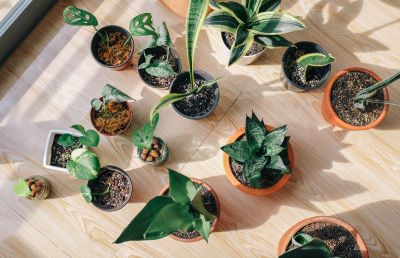
13. Dracaena (Dracaena spp.)
Dracaena plants come in various shapes and sizes, making them versatile choices for indoor microgardens. From the vibrant Dracaena Marginata to the majestic Dracaena Massangeana, these plants can effortlessly elevate the aesthetic of any indoor space.
14. Succulents (Various Species)
Succulents, with their captivating shapes and ability to store water, are a trendy choice for indoor microgardening. From Echeverias to Haworthias, the world of succulents offers a vast array of possibilities for your microgarden.
15. Ferns (Various Species)
Ferns bring a touch of lush greenery and elegance to indoor spaces. From the Boston Fern to the Maidenhair Fern, these delicate plants can thrive in low-light conditions and high humidity.
16. Mint (Mentha spp.)
Mint is a fragrant and flavorful herb that can be grown indoors with ease. Its rapid growth and spreading habit make it a versatile addition to your microgarden.
17. Swiss Cheese Plant (Monstera deliciosa)
The Swiss Cheese Plant is characterized by its unique and striking perforated leaves, making it a favorite among plant enthusiasts. It thrives in bright, indirect light and can add a tropical feel to your indoor space.
18. Pilea Peperomioides (Chinese Money Plant)
The Pilea Peperomioides has gained popularity as a stylish and quirky indoor plant. Its round, pancake-like leaves make it a delightful addition to any microgarden.
19. Philodendron (Various Species)
Philodendrons come in various shapes, sizes, and colors, making them versatile and eye-catching additions to your indoor microgarden. From the heart-shaped Philodendron Brasil to the trailing Philodendron Micans, these plants can suit any design preference.
20. Orchids (Various Species)
Orchids are renowned for their exotic beauty and elegance. While they may require some extra care, these stunning flowers can be a focal point in any indoor microgarden. Popular orchid species like Phalaenopsis and Dendrobium can thrive in the right conditions, providing a touch of luxury to your home.
21. Cherry Tomatoes (Solanum lycopersicum)
For those who want to venture into growing edibles indoors, cherry tomatoes are an excellent choice. With proper sunlight and care, you can enjoy the pleasure of harvesting sweet, juicy tomatoes from your microgarden.
22. African Violets (Saintpaulia)
African Violets are beloved for their dainty, colorful blooms and compact size, making them ideal for small indoor spaces. With the right care and attention, these charming plants can brighten up any room.
23. Bamboo Palm (Chamaedorea seifrizii)
The Bamboo Palm is an elegant and air-purifying plant that can thrive in low light conditions. Its lush foliage adds a tropical touch to any microgarden, creating a calming and inviting atmosphere.
24. Ficus Bonsai (Ficus retusa)
Bonsai enthusiasts can explore the world of indoor microgardening with Ficus Bonsai. These miniature trees can be shaped and pruned to create stunning living art pieces for your indoor space.
25. Ponytail Palm (Beaucarnea recurvata)
The Ponytail Palm is an eye-catching plant known for its unique appearance and resilience. With its long, arching leaves resembling a cascading ponytail, this plant can become a conversation starter in your microgarden.
FAQs about Indoor Microgardening
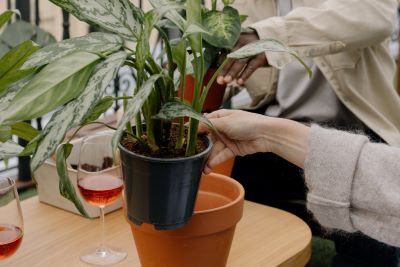
What Are the Best Lighting Conditions for Indoor Microgardening?
Proper lighting is crucial for the success of indoor microgardening. Most indoor plants thrive in bright, indirect light. South or west-facing windows are often the best spots to provide sufficient light. However, if natural light is limited, consider using grow lights specifically designed for indoor plants.
How Often Should I Water Indoor Plants?
The frequency of watering indoor plants depends on various factors, such as the type of plant, humidity levels, and the size of the pot. It’s essential to avoid overwatering, as it can lead to root rot. As a general rule, water the plants when the top inch of the soil feels dry to the touch.
Can I Use Fertilizers for Indoor Plants?
Yes, fertilizers can be beneficial for indoor plants to ensure they receive essential nutrients. Choose a balanced, water-soluble fertilizer and follow the instructions on the packaging for application frequency and dosage.
How Do I Prevent Pests in My Indoor Microgarden?
Pests can occasionally be a challenge in indoor microgardens. To prevent infestations, regularly inspect your plants for signs of pests and promptly address any issues. Using organic pest control methods or insecticidal soaps can help keep unwanted guests at bay.
Can I Repot Indoor Plants?
Yes, repotting is necessary when indoor plants outgrow their current pots or when the soil becomes depleted of nutrients. Select a pot that is one size larger than the current one and ensure it has drainage holes to avoid waterlogging.
What Are Some Low-Maintenance Indoor Plants for Beginners?
If you’re new to indoor microgardening, consider starting with low-maintenance plants like Snake Plant, Spider Plant, or Pothos. These plants are forgiving and can withstand occasional neglect.
What materials do you need to get started with microgardening?
To get started with microgardening, you don’t need an extensive array of tools. The beauty of microgardening lies in its simplicity and accessibility. Here are the essential tools you’ll need to begin your indoor microgardening journey:
- Plant pots & containers
- Potting soil
- Watering can / spray bottle
- Small trowel / hand shovel
- Pruning shears / scossors
- Plant labels
- Gardening gloves
- Watering tray / saucer
- Misting bottle
- Grow light (optional)
- Fertilizer (optional)
- Plant support for climbing plants (optional)
- Plant Support (Optional):
In Conclusion
Indoor microgardening opens up a world of possibilities to bring nature’s beauty into your living spaces. From air-purifying wonders to edible delights, the best plants for indoor microgardening cater to various tastes and preferences. Remember to consider your space, lighting conditions, and the level of care you can provide when selecting plants for your microgarden.
With a bit of creativity and passion, you can transform your indoor spaces into lush, green oases that not only enhance the aesthetics but also contribute to a healthier and more pleasant living environment. Experiment with different plant combinations, and don’t be afraid to express your unique style through your indoor microgarden.
So, why wait? Embark on your indoor microgardening journey today and experience the joy of nurturing beautiful plants right in the comfort of your home.







